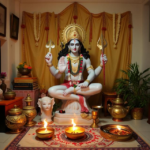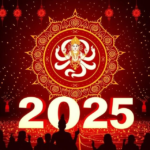In our fast-paced, technology-driven lives, planning often relies on calendars, digital assistants, and productivity tools. Yet, a growing number of people are rediscovering an ancient method rooted in cosmic rhythms—the Panchang. Derived from Sanskrit, “Panchang” (पंचांग) literally means “Five Limbs” and represents a Vedic calendar system used for centuries to determine auspicious times and avoid inauspicious moments.
But in the age of Google Calendar and AI tools, is using Panchang for daily planning still practical? Can it fit into a corporate schedule, an entrepreneur’s hustle, or a student’s routine? This blog explores how Panchang works, its relevance today, and how it can enhance your personal and professional life.
What is Panchang?
Panchang is an ancient Hindu calendar that consists of five core elements:
Tithi (Lunar Day) – Represents the phase of the moon. There are 30 Tithis in a lunar month.
Vaar (Weekday) – Days of the week, each ruled by a planet.
Nakshatra (Constellation) – The star constellation in which the moon resides on a given day. There are 27 Nakshatras.
Yoga (Luni-Solar Day) – A calculation of the angular relationship between the Sun and the Moon.
Karana (Half Tithi) – Represents half of a Tithi, used to determine the auspiciousness of specific hours.
Together, these elements help Vedic astrologers determine Shubh Muhurat (auspicious timing), rituals, fasting days, and festivals.
Why Did People Use Panchang Traditionally?
In ancient Indian society, Panchang was the primary tool for:
Fixing marriage and childbirth timings
Planning travel and business transactions
Performing rituals and spiritual practices
Determining the right time for agriculture and harvest
Each action was aligned with cosmic timing to ensure prosperity, health, and spiritual success.
Panchang in Modern Times: Is It Still Useful?
1. For Personal Life
a) Choosing Auspicious Times (Shubh Muhurat)
Planning a wedding, housewarming, or even naming a child? Panchang is still widely used in Indian households for such events. Shubh Muhurats are calculated to minimize negative energy and maximize blessings.
b) Daily Decision Making
Starting a new diet, habit, or business?
Booking important meetings or interviews?
Taking medical treatments or surgeries?
Many people consult Panchang to ensure planetary harmony during such decisions.
2. For Professional and Business Use
Even in today’s corporate world, successful businesspeople often consult Panchang:
Lata Mangeshkar, the Nightingale of India, was known to avoid certain Nakshatras for concerts.
Ratan Tata, according to reports, aligns company launches with astrological charts.
Some modern entrepreneurs schedule product launches or investments based on favorable Tithis and Yogas to increase success probability.
3. For Students and Professionals
If you’re a student or a working professional, here’s how you can practically apply Panchang:
Use Nakshatra of the day to understand mental clarity or emotional challenges.
Plan high-focus work during Siddhi or Amrit Yoga days.
Avoid conflict, arguments, or legal matters during Bhadra or Rikta Tithi.
A little alignment with cosmic rhythms can increase your effectiveness and reduce stress.
4. For Health and Wellbeing
Vedic wisdom also integrates Panchang with Ayurveda and Yoga:
Vata Days (Ekadashi, Amavasya): Good for fasting and introspection.
Pitta Days (Ashtami, Chaturdashi): Ideal for detox or cleansing.
Kapha Days (Poornima, Dwitiya): Best for physical healing or rejuvenation.
Yoga and meditation practices are more impactful when aligned with the lunar cycle.
How to Use Panchang Practically in Your Life
Let’s break it down by how each Panchang element can be applied in daily planning:
1. Tithi (Lunar Day)
| Tithi Type | Nature | Best For |
|---|---|---|
| Shukla Paksha | Growth/Expansion | New beginnings, investments |
| Krishna Paksha | Withdrawal | Letting go, spiritual practices |
Avoid:
Amavasya – New moon day (ideal only for spiritual sadhana).
Chaturdashi & Ashtami – High energy days, avoid confrontations.
2. Vaar (Weekday)
| Day | Planet | Favorable Activities |
|---|---|---|
| Monday | Moon | Emotional matters, family planning |
| Tuesday | Mars | Physical tasks, avoid surgeries, legal issues |
| Wednesday | Mercury | Communication, business negotiations |
| Thursday | Jupiter | Spiritual growth, learning |
| Friday | Venus | Arts, beauty, relationships |
| Saturday | Saturn | Discipline, long-term goals, charities |
| Sunday | Sun | Leadership, health, confidence |
3. Nakshatra (Constellation)
Each Nakshatra has its own influence. For example:
Ashwini – Best for starting anything new.
Rohini – Excellent for love and creativity.
Moola – Avoid surgeries or high-risk work.
Modern Panchang apps often show Nakshatra along with interpretations for your day.
4. Yoga
There are 27 Yogas. Among the most auspicious:
Siddhi Yoga – For success and breakthroughs.
Amrit Yoga – For health, wealth, and positivity.
Avoid:
Vyatipat, Vaidhriti, and Vishkambha Yoga for anything major.
5. Karana
Karana is rarely discussed but highly useful in micro-planning your day.
Bava, Balava, Kaulava – Good for travel and short tasks.
Taitila, Garija – Excellent for creative and spiritual work.
Avoid:
Vishti (Bhadra) – Considered highly inauspicious.
How to Access Panchang in 2025?
Modern technology has made Panchang easier to access:
Apps:
Drik Panchang
Panchang by AstroSage
Hindu Calendar
Websites:
Printed Calendars:
Still widely used in rural India and among elders for daily reference.
Criticism and Skepticism
Superstition or Science?
Critics argue that relying on Panchang is pseudoscientific. However, proponents say it’s about aligning with natural energy rhythms, not blind belief.
Too Complicated?
True, Panchang terms can be complex. But simplified versions in English and regional languages are now widely available.
Not Measurable?
While you may not “measure” the benefits instantly, regular users often report:
Better emotional stability
Reduced conflict
Higher productivity
Modern Success Stories of Panchang Users
Indian Weddings – Still 95% based on Panchang.
Startup Founders – Choose launch days after consulting astrologers.
Farmers in Rural India – Still rely on lunar Tithis for sowing/harvest.
Yoga Centers & Ashrams – Align classes and detox retreats with Panchang.
Is Using Panchang Practical Today?
Absolutely—if used mindfully. Panchang isn’t about fear or superstition but about syncing with cosmic time, just like how you may use weather forecasts or market trends.
You don’t need to change your lifestyle drastically. Start small:
Check the Tithi before beginning something major.
Avoid travel on Bhadra days.
Use Siddhi Yoga days for critical work.
Over time, you may notice deeper harmony in your planning, work, and energy levels.
Final Thoughts
As the world gets faster and more artificial, tools like Panchang offer a chance to slow down and reconnect—with nature, tradition, and yourself. Whether you’re spiritual or skeptical, you lose nothing by aligning with ancient wisdom. Instead, you might just find the divine rhythm in your day.
Related posts:
 The 5 Elements of Panchang: Tithi, Vaar, Nakshatra, Yoga, and Karana Explained
The 5 Elements of Panchang: Tithi, Vaar, Nakshatra, Yoga, and Karana Explained
 Mahashivratri: A Festival of Spiritual Awakening
Mahashivratri: A Festival of Spiritual Awakening
 How to Perform Maha Shivratri Puja at Home: Step-by-Step Guide
How to Perform Maha Shivratri Puja at Home: Step-by-Step Guide
 Holi Party Ideas: Food, Music, and Games for a Memorable Celebration
Holi Party Ideas: Food, Music, and Games for a Memorable Celebration
 Hindu New Year 2025: Significance, History, Traditions, and Celebrations
Hindu New Year 2025: Significance, History, Traditions, and Celebrations
 The Spiritual Significance and Story Behind Jyeshtha Mangal
The Spiritual Significance and Story Behind Jyeshtha Mangal
